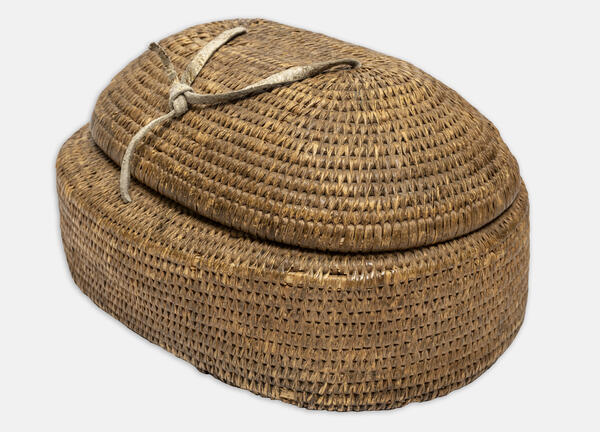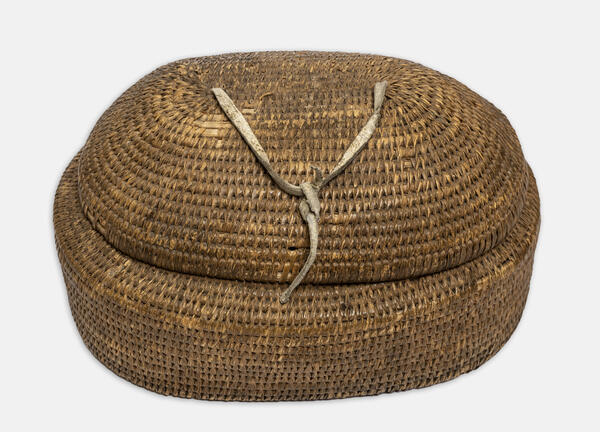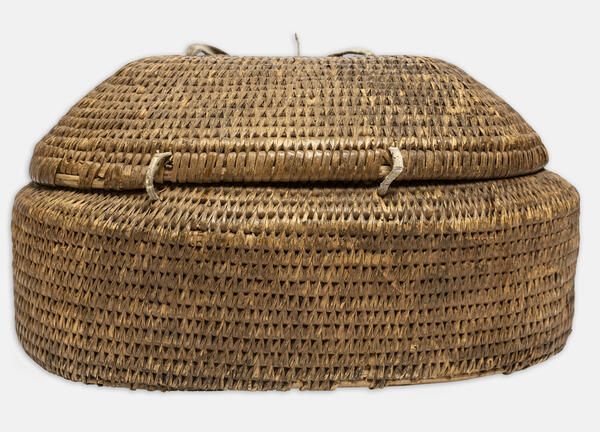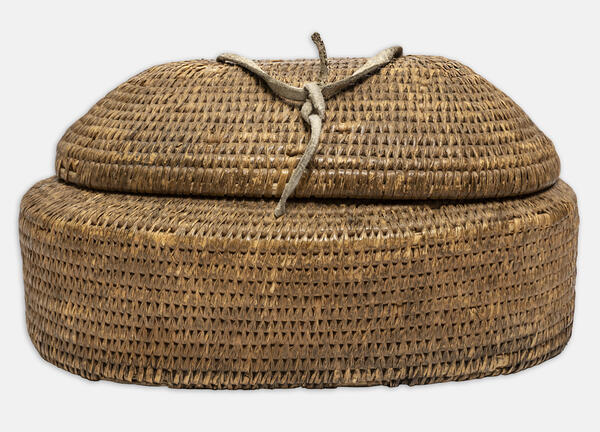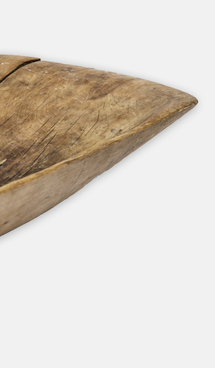A kornevatik is a traditional Khanty braided basket made of cedar root and bird cherry bark. Such baskets were used in all households and varied in size: small ones were used to store household utensils, jewelry, knives, arrowheads, and food, while large ones were designed for reindeer hides, clothing, tools, and ritual objects.
Kornevatik baskets were braided using the sarga harvested in summer — “thin shingles, twigs, withies, and roots for knitting and weaving.” Suitable fragments of cedar roots were dug up and split into four pieces. Several thin layers of wood were separated. They were wrung out, cleaned, and divided into long narrow strips.
The sarga would then be rolled into coils, left to dry, and stored until it was needed. Cedar root was soaked in water to restore its original properties — flexibility, strength, and pliability. It stretched easily and did not break when pierced. The production of a kornevatik basket began with a frame made of bird cherry branches. The choice of a frame determined whether the basket would be rounded or rectangular. The former design was considered more spacious and versatile.
Next, the craftsman braided the frame with cedar root strips: a cedar root strip was pulled through a hole made by an awl on the lower coil. The lid was made separately and fastened with rawhide straps. The same straps were used to make carrying handles. The process of making such baskets was very labor-intensive. It required a lot of physical effort and was traditionally considered a man’s job.
Thanks to the tight weaving, properly fitting lid, and natural properties of cedar root, kornevatik baskets protected the contents from moisture and deterioration. Such baskets were convenient to carry and bring on trips instead of suitcases. Until the end of the 20th century, kornevatik baskets were widespread in the households of the Agan Khanty.
Nowadays kornevatik baskets are kept in the
collections of many museums, but the skill of cutting cedar root and weaving
such baskets is falling into obscurity. The Ethnographic Museum of the Varyogan
Village houses an oval kornevatik basket with a hinged convex lid on leather
straps. The basket is equipped with a leather clasp and a handle.

